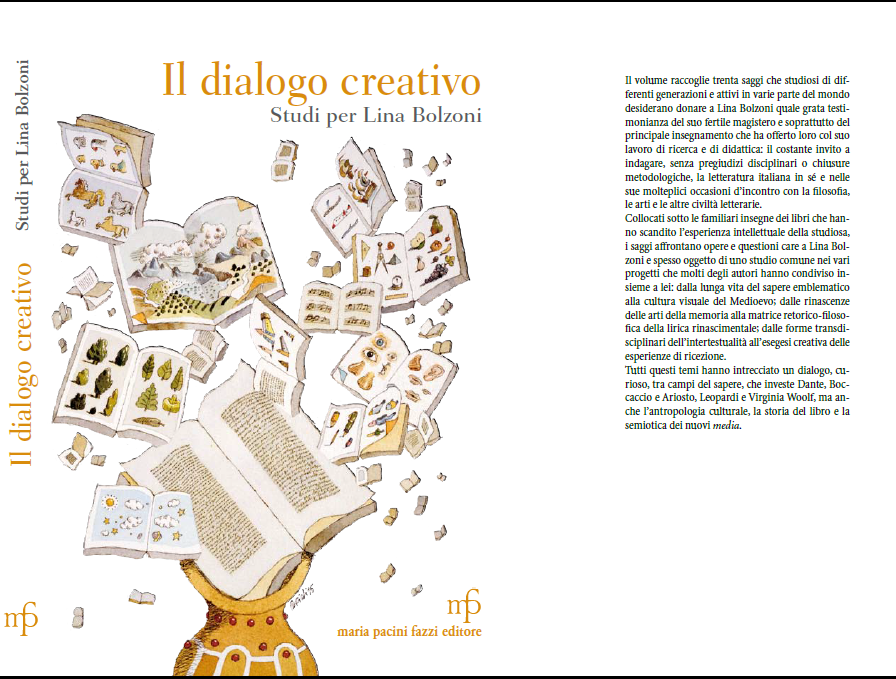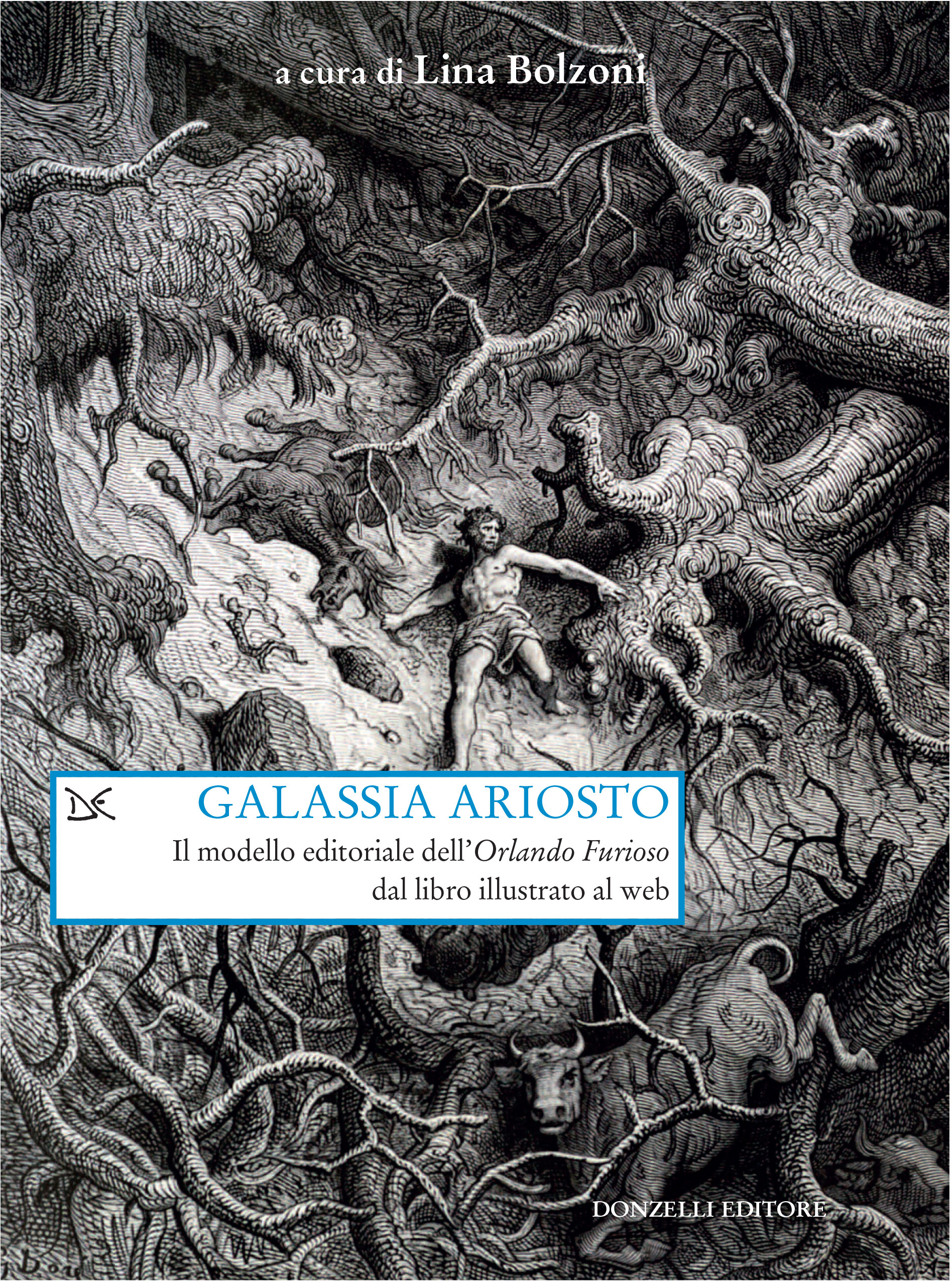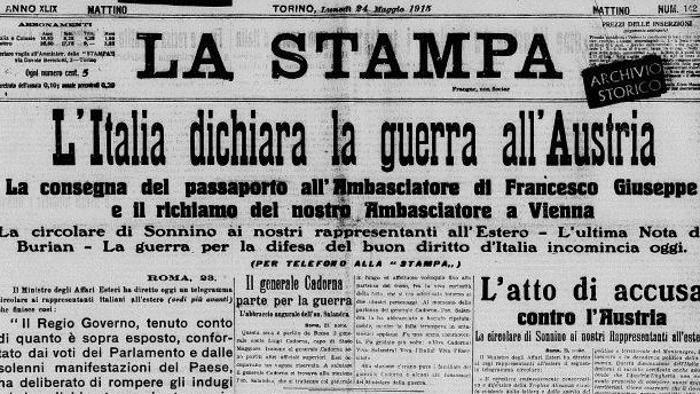I recently published a review of Emanuele Trevi’s last book, Sogni e favole. Un apprendistato. The review is titled L’uso dell’arte and was published by the online magazine Doppiozero.
Category Archives: Poetry
Daily War. Kraus, Bontempelli, Delfini
One hundred years ago, on November 11, was signed the armistice that ended the First World War. I propose here a reflection on the relationship between the war and the media system, as elaborated in literary texts.
Nessuna poesia può essere l’immagine fedele del nostro mondo. La fedele, la tremenda immagine del nostro mondo è il giornale. È un pozzo di sapere. Non sa niente. Continua a voler sapere.
Elias Canetti, Il cuore segreto dell’orologio
Dormi ma senti frinire
remote
le rotative
rotanti nell’oscurità
per dare forma
all’aldiquà.
Valerio Magrelli, Didascalie per la lettura di un giornale
Portraits and caricatures
It has been published the volume Il dialogo creativo. Studi per Lina Bolzoni, edited by Maria Pia Ellero, Matteo Residori, Massimiliano Rossi, and Andrea Torre (Lucca: maria pacifini fazzi editore, 2017).

The book is conceived as an homage offered to Lina Bolzoni in the occasion of her retirement. Lina Bolzoni is an outstanding scholar in Renaissance Studies and established original, unexplored paths of inquiry regarding several aspects of visual and literary culture in the Early Modern period. It was my privilege to be one of her students and to collaborate with her as a post-doc researcher within the ERC project Galassia Ariosto. Continue reading
Emotional performances
It has been recently published the volume Ti do la mia parola. Sette saggi sul tradimento, edited by Alessandro Benassi and Serena Pezzini, with an introduction by Paolo Godani (Roma: Edizioni di Storia e Letteratura, 2017).

Ariosto Galaxy: beyond the book
I’m immensely happy to talk about the release of the book Galassia Ariosto. Il modello editoriale dell’Orlando Furioso dal libro illustrato al web, edited by Lina Bolzoni and published by Donzelli.

Galassia Ariosto is more than a book: it is the tip of the iceberg of the five-years project Looking at Words through Images run at the CTL – Centre for Data Processing of Texts and Images in the Literary Tradition, Scuola Normale Superiore di Pisa – and dedicated to the editorial galaxy grown during the Sixteenth century around the international success of Ludovico Ariosto’s Orlando Furioso. Particularly, the project addressed the spreading of illustrated books and the network of relations this editorial format established between texts and images.
Marino: a cosmic self-portrait

Frans Pourbus the Younger, Portrait of Giovanni Battista Marino, 1619, Detroit Institute of Arts. Source: Wikimedia Commons, public domain.
In his sonnet Sul proprio ritratto (di mano di Bartolomeo Schidoni) – published in 1620 within La Galeria, a collection of poems conceived as descriptions of, and dialogues with, figurative artworks – Giovan Battista Marino suggests that to depict his portrait a painter should employ the harshness of ice and fire, the terror of the shaded dark of night, the paleness of death, the imperfection of nature, and colours sharpened with whispers and tears. Continue reading
Parini: last days of aristocracy
In 1763 the Abbot Giuseppe Parini composes the poem Il Giorno, a satirical text addressing the inactive, lazy, superficial life of the aristocracy. Pretending to be an ode written in praise and for the education of a Young Gentleman, the poem harshly criticises the parasitic emptiness of noblemen and women. As a parody of a eulogy, Il Giorno deforms the classical poetic style, applying the language and rhetoric of epic and mythological tradition to the frivolous daily activities of the gentleman. The text provides a series of caricatures: first, the Young Lord is scared to death by the word “work”, and his hair stands on end (vv. 54-56):
Ma che? Tu inorridisci, e mostri in capo,
qual istrice pungente, irti i capegli
al suon di mie parole?
Michelangelo: a self-caricature
Caricature misshapes the masks that society applies to the human face. This is why artists use deformation to build self-representations that contradict the social stereotypes of self-fashioning. In one of his poems, Michelangelo Buonarroti portrays his physical and psychological dejection creating a proper self-caricature: bluish coloured eyes, rotten teeth, a face that is fit to terrify, damaged clothes, injured ears and laboured breathing. The self-caricature involves not just the body of the artist, but also his own work of art: his writings become valueless scribblings, and his sculptures are seen as useless rag-dolls. Continue reading
Alcina’s double portrait
In the seventh canto of Ludovico Ariosto’s Orlando furioso (1532) Ruggiero arrives at the island of the sorceress Alcina. The sorceress encounters him on the threshold of her wonderful palace. She appears as the image of beauty itself. «Her person», Ariosto writes, «is as shapely and as fine / As painters at their most inspired can show», and her face presents a «perfect symmetry». The long description accurately depicts every detail of Alcina’s face and body. (OF, VII, 11-16):
Di persona era tanto ben formata,
quanto me’ finger san pittori industri;
con bionda chioma lunga ed annodata:
oro non è che più risplenda e lustri.
Spargeasi per la guancia delicata
misto color di rose e di ligustri;
di terso avorio era la fronte lieta,
che lo spazio finia con giusta meta.Sotto duo negri e sottilissimi archi
son duo negri occhi, anzi duo chiari soli,
pietosi a riguardare, a mover parchi;
intorno cui par ch’Amor scherzi e voli,
e ch’indi tutta la faretra scarchi
e che visibilmente i cori involi:
quindi il naso per mezzo il viso scende,
che non truova l’invidia ove l’emende.Sotto quel sta, quasi fra due vallette,
la bocca sparsa di natio cinabro;
quivi due filze son di perle elette,
che chiude ed apre un bello e dolce labro:
quindi escon le cortesi parolette
da render molle ogni cor rozzo e scabro;
quivi si forma quel suave riso,
ch’apre a sua posta in terra il paradiso.Bianca nieve è il bel collo, e ’l petto latte;
il collo è tondo, il petto colmo e largo:
due pome acerbe, e pur d’avorio fatte,
vengono e van come onda al primo margo,
quando piacevole aura il mar combatte.
Non potria l’altre parti veder Argo:
ben si può giudicar che corrisponde
a quel ch’appar di fuor quel che s’ascondeMostran le braccia sua misura giusta;
e la candida man spesso si vede
lunghetta alquanto e di larghezza angusta,
dove né nodo appar, né vena eccede.
Si vede al fin de la persona augusta
il breve, asciutto e ritondetto piede.
Gli angelici sembianti nati in cielo
non si ponno celar sotto alcun velo.Avea in ogni sua parte un laccio teso,
o parli o rida o canti o passo muova:
né maraviglia è se Ruggier n’è preso,
poi che tanto benigna se la truova.
Quel che di lei già avea dal mirto inteso,
com’è perfida e ria, poco gli giova;
ch’inganno o tradimento non gli è aviso
che possa star con sì soave riso.


